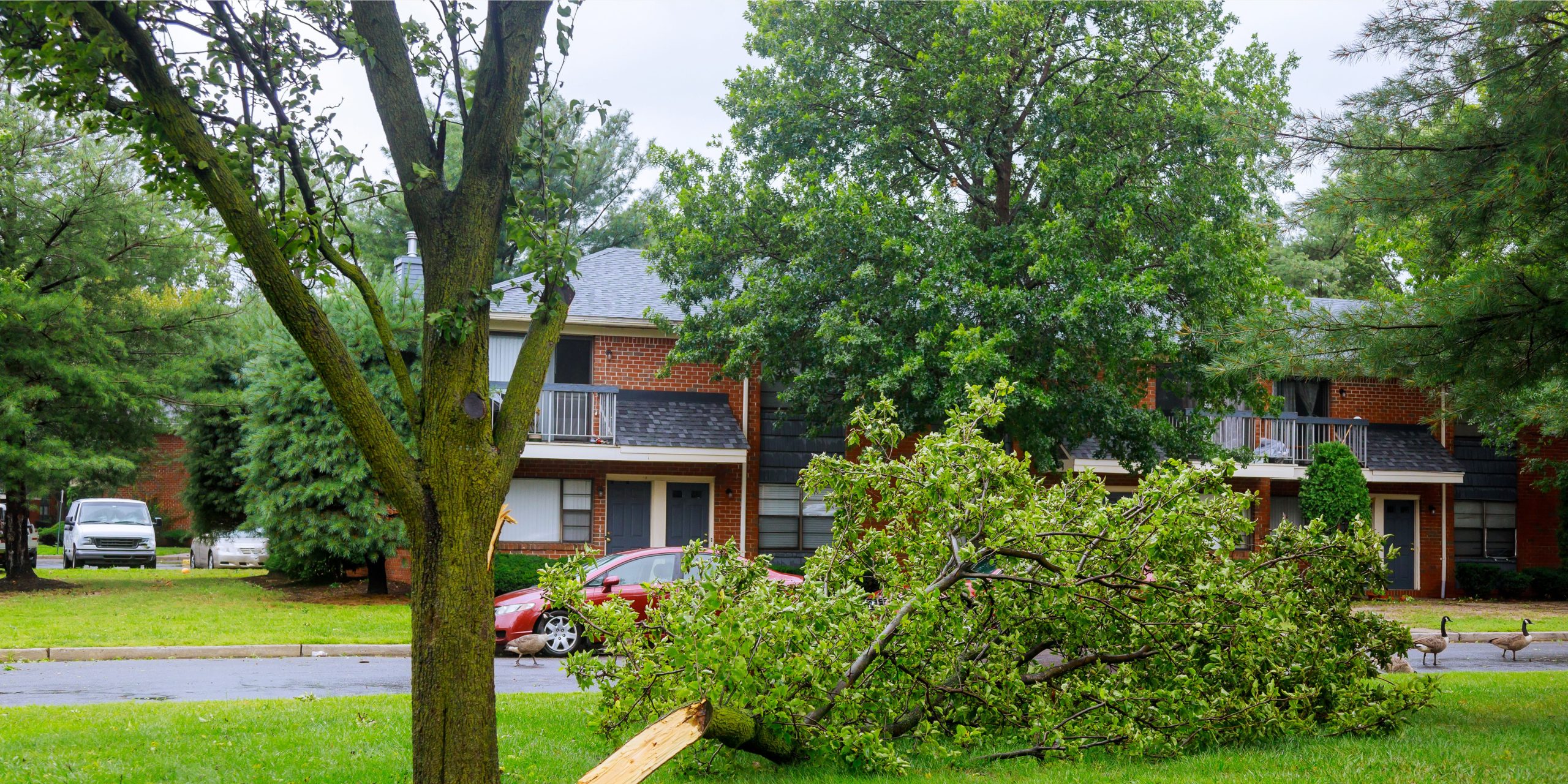Introduction
Tree Care and Storm Preparedness for severe weather events, such as storms, high winds, heavy snow, and ice, pose significant threats to the health and longevity of your trees. As climate change intensifies extreme weather patterns, it’s become increasingly crucial for property owners to take proactive measures in safeguarding their trees. Not only do well-maintained trees enhance the beauty and value of your property, but they also provide essential environmental benefits like air purification, shade, and wildlife habitat.
This comprehensive guide will walk you through expert strategies for protecting your trees from severe weather, ensuring their resilience, and maintaining their health throughout the changing seasons. From proper pruning techniques to structural support methods and emergency preparedness, we’ll cover everything you need to know to keep your trees strong and thriving, no matter what Mother Nature throws their way.
Table of Contents
- Understanding the Impact of Severe Weather on Trees
- The Importance of Regular Tree Maintenance
- Pruning for Resilience: Techniques and Best Practices
- Providing Structural Support: Cabling, Bracing, and More
- Root Protection and Soil Management
- Preparing for Severe Weather Events
- Post-Storm Tree Care and Recovery
- Seasonal Tree Care Tips
- When to Call a Professional Arborist
- Conclusion and Next Steps

1. Understanding the Impact of Severe Weather on Trees
Before diving into protection strategies, it’s essential to understand how severe weather affects trees. Different weather events can cause various types of damage:
High Winds
- Uprooting of trees with weak root systems
- Breakage of branches or entire tree crowns
- Stripping of leaves and small twigs
Heavy Snow and Ice
- Accumulation on branches, causing them to bend or break
- Split trunks due to excessive weight
- Root damage from frozen soil
Lightning Strikes
- Immediate structural damage
- Potential for fire
- Long-term health issues due to internal damage
Flooding
- Soil erosion around roots
- Oxygen deprivation to roots
- Increased susceptibility to disease and pest infestation
Understanding these impacts helps in developing targeted protection strategies and recognizing potential vulnerabilities in your trees.
2. The Importance of Regular Tree Maintenance
Regular maintenance is the cornerstone of tree health and resilience. A well-maintained tree is better equipped to withstand severe weather conditions. Key aspects of regular maintenance include:
Routine Inspections
- Conduct visual inspections at least twice a year
- Look for signs of disease, pest infestation, or structural weakness
- Pay special attention to trees near structures or power lines
Proper Watering
- Ensure trees receive adequate water, especially during dry periods
- Use drip irrigation or soaker hoses for efficient watering
- Avoid overwatering, which can lead to root rot
Fertilization
- Apply balanced fertilizers to support overall tree health
- Consider soil testing to determine specific nutrient needs
- Follow recommended application rates to avoid over-fertilization
Mulching
- Apply a 2-4 inch layer of organic mulch around the tree base
- Keep mulch away from the trunk to prevent moisture buildup
- Replenish mulch annually or as needed
By maintaining a regular care routine, you’ll be better positioned to identify and address potential issues before they become exacerbated by severe weather events.
3. Pruning for Resilience: Techniques and Best Practices
Proper pruning is one of the most effective ways to protect trees from severe weather damage. It helps maintain a strong structure and reduces the risk of branch failure during storms.
Regular Pruning to Strengthen Trees
Removing Weak or Dead Branches
- Identify and remove branches that are:
- Dead, dying, or diseased
- Crossing or rubbing against each other
- Growing at weak angles
- Prune back to the branch collar, avoiding flush cuts
Thinning the Canopy
- Selectively remove branches to reduce wind resistance
- Focus on maintaining the tree’s natural shape
- Avoid removing more than 25% of live branches in a single season
Crown Reduction
Reducing Height and Spread
- Use this technique for trees growing near structures or power lines
- Make cuts at lateral branches at least 1/3 the diameter of the removed limb
- Maintain the tree’s natural form while reducing overall size
Timing of Pruning
- Late winter or early spring is ideal for most trees
- Avoid pruning during active growth periods
- Prune storm-damaged limbs as soon as it’s safe to do so
Professional Pruning
- Consider hiring a certified arborist for:
- Large trees
- Trees with complex structures
- Any pruning near power lines or structures
Remember, proper pruning techniques are crucial. Improper pruning can create entry points for pests and diseases, weakening the tree and making it more susceptible to storm damage.
4. Providing Structural Support: Cabling, Bracing, and More
For trees with structural weaknesses or those particularly vulnerable to severe weather, additional support systems can be invaluable.
Cabling and Bracing
Supporting Weak Branches
- Install cables high in the tree crown to limit branch movement
- Use braces to reinforce weak branch unions or split trunks
- Ensure proper tension to allow for natural movement while providing support
Preventing Splitting
- Ideal for trees with multiple trunks or large, heavy limbs
- Can help preserve trees with historical or sentimental value
- Regular inspection and adjustment of support systems is crucial
Guying
- Used primarily for newly planted or transplanted trees
- Helps stabilize the root system as it establishes
- Remove guy wires after 1-2 growing seasons to prevent girdling
Lightning Protection Systems
- Consider for tall trees or those in lightning-prone areas
- Involves installing a copper cable from the tree’s highest point to the ground
- Can significantly reduce the risk of lightning damage
When implementing structural support systems, it’s essential to work with a certified arborist. Improper installation can cause more harm than good and may create additional vulnerabilities during severe weather.
5. Root Protection and Soil Management
A tree’s root system is its foundation, playing a crucial role in stability and nutrient uptake. Protecting and nurturing the root zone is essential for overall tree health and weather resilience.
Mulching and Watering
Benefits of Proper Mulching
- Regulates soil temperature
- Retains moisture
- Suppresses weed growth
- Improves soil structure over time
Mulching Best Practices
- Use organic materials like wood chips or shredded bark
- Apply a 2-4 inch layer, keeping mulch away from the trunk
- Extend mulch to the tree’s drip line when possible
Watering Guidelines
- Water deeply and less frequently to encourage deep root growth
- Use a soaker hose or drip irrigation for efficient watering
- Adjust watering based on rainfall and soil moisture levels
Preventing Soil Erosion
- Plant ground cover or use erosion control blankets on slopes
- Install retaining walls in areas prone to erosion
- Avoid soil compaction by limiting foot traffic and heavy equipment near trees
Soil Health Management
- Conduct regular soil tests to assess nutrient levels and pH
- Amend soil as needed based on test results
- Consider vertical mulching or air spading for compacted soils
Root Protection During Construction
- Establish a tree protection zone (TPZ) before beginning any construction
- Avoid excavating within the TPZ
- Use temporary fencing to protect trees from equipment damage
By focusing on root health and soil management, you can significantly improve your trees’ ability to withstand severe weather events and recover from any damage sustained.
6. Preparing for Severe Weather Events
Proactive preparation is key to minimizing tree damage during severe weather. Here’s how to ensure your trees are ready for whatever nature brings:
Pre-Storm Inspections
Assessing Tree Health
- Conduct thorough inspections before storm seasons
- Look for signs of decay, disease, or structural weakness
- Pay special attention to trees near structures or power lines
Identifying and Addressing Potential Hazards
- Remove dead or hanging branches
- Secure loose objects that could become projectiles
- Trim branches away from structures and power lines
Creating an Emergency Plan
- Develop a plan for different severe weather scenarios
- Identify safe areas on your property away from trees
- Keep contact information for emergency tree services handy
Documenting Tree Conditions
- Take photos or videos of your trees’ pre-storm condition
- Keep records of any recent tree work or assessments
- This documentation can be valuable for insurance purposes if damage occurs
Equipment Preparation
- Ensure you have necessary tools for minor post-storm cleanup
- Consider investing in a generator for prolonged power outages
- Stock up on supplies like tarps and rope for temporary repairs
By taking these preparatory steps, you’ll be better equipped to handle severe weather events and minimize potential damage to your trees and property.
7. Post-Storm Tree Care and Recovery
After a severe weather event, prompt and proper care is crucial for tree recovery and preventing further damage.
Assessing and Addressing Damage
Immediate Safety Checks
- Stay clear of downed power lines and report them to authorities
- Be cautious of hanging or broken branches that may fall
Damage Assessment
- Evaluate each tree for:
- Broken or hanging branches
- Split trunks or major limbs
- Uprooting or leaning
- Damage to the root zone
Prioritizing Tree Care
- Address hazardous situations first
- Focus on saving trees with minor to moderate damage
- Consider removal for severely damaged or unstable trees
First Aid for Storm-Damaged Trees
Proper Pruning of Damaged Limbs
- Clean-cut jagged or torn branches back to healthy wood
- Use proper pruning techniques to promote healing
- Avoid over-pruning, which can stress the tree further
Repair of Minor Bark and Trunk Damage
- Clean ragged edges of torn bark
- Do not apply wound dressings unless recommended by an arborist
Straightening Leaning Trees
- Small trees can often be staked and straightened
- Large trees may require professional equipment and expertise
Long-Term Recovery Care
- Provide extra water and nutrients to support recovery
- Monitor for signs of stress or secondary problems
- Be patient – recovery can take time, and some changes may be permanent
When to Call a Professional
- For large limb removal or work requiring climbing
- If a tree is leaning against a structure or power lines
- When assessing whether a damaged tree can be saved
Remember, safety should always be your first priority when dealing with storm-damaged trees. Don’t hesitate to call in professional help for complex or dangerous situations.
8. Seasonal Tree Care Tips
Each season brings unique challenges and care requirements for trees. Here’s a seasonal breakdown of tree care tasks:
Spring
- Inspect trees for winter damage
- Prune spring-flowering trees after blooming
- Apply mulch as soil warms
- Begin regular watering as needed
Summer
- Monitor for signs of drought stress
- Prune dead or damaged limbs
- Check for pest infestations
- Maintain consistent watering schedule
Fall
- Plant new trees
- Prune dead, diseased, or hazardous branches
- Avoid fertilizing, which can stimulate late-season growth
- Continue watering until the ground freezes
Winter
- Prune dormant trees (except spring bloomers)
- Protect young trees from wildlife damage
- Monitor for snow and ice accumulation on branches
- Avoid salt damage to roots near walkways and roads
By following these seasonal care tips, you’ll ensure your trees remain healthy and resilient year-round, better preparing them for severe weather events.
9. When to Call a Professional Arborist
While many aspects of tree care can be managed by homeowners, certain situations require the expertise of a certified arborist:
Complex Pruning Needs
- Large trees requiring climbing
- Trees near power lines or structures
- Extensive crown reduction or reshaping
Structural Support Installation
- Cabling and bracing systems
- Lightning protection installation
Disease and Pest Management
- Diagnosis of complex health issues
- Implementation of treatment plans
- Application of pesticides or fungicides
Tree Removal
- Removal of large or hazardous trees
- Situations requiring specialized equipment
- When removal may impact nearby trees or structures
Post-Storm Damage Assessment
- Evaluation of severe storm damage
- Recommendations for recovery or removal
Risk Assessment
- Comprehensive tree health and structure evaluations
- Development of long-term management plans
When selecting an arborist, look for certifications from reputable organizations like the International Society of Arboriculture (ISA) and check for proper insurance and references.
10. Conclusion and Next Steps
Protecting your trees from severe weather is an ongoing process that requires attention, care, and sometimes professional expertise. By implementing the strategies outlined in this guide – from regular maintenance and proper pruning to structural support and emergency preparedness – you can significantly enhance your trees’ resilience to severe weather events.
Remember, healthy trees are more capable of withstanding storms and recovering from damage. Invest in your trees’ health through regular care, and they’ll reward you with beauty, shade, and increased property value for years to come.
Next Steps:
- Conduct a thorough inspection of your trees, noting any areas of concern.
- Develop a regular maintenance schedule, including pruning and health checks.
- Implement proper mulching and watering practices.
- Consider consulting with a certified arborist for a professional assessment and care plan.
- Prepare an emergency plan for severe weather events.
By taking these steps, you’ll be well on your way to ensuring your trees remain healthy, beautiful, and resilient in the face of severe weather.
Need expert help protecting your trees from severe weather? Contact West Coast Tree Service today for professional tree care services. Our certified arborists can assess your trees, provide expert pruning and structural support, and help you prepare for any weather conditions. Call us now at
(559)736-6994 or visit our website at www.westcoasttreeservice.com to schedule a consultation and ensure your trees are ready for the next storm.





